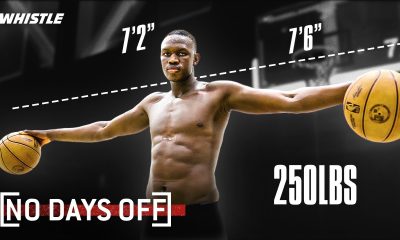NIL
Governor Stitt Signs Order to Support Oklahoma Student
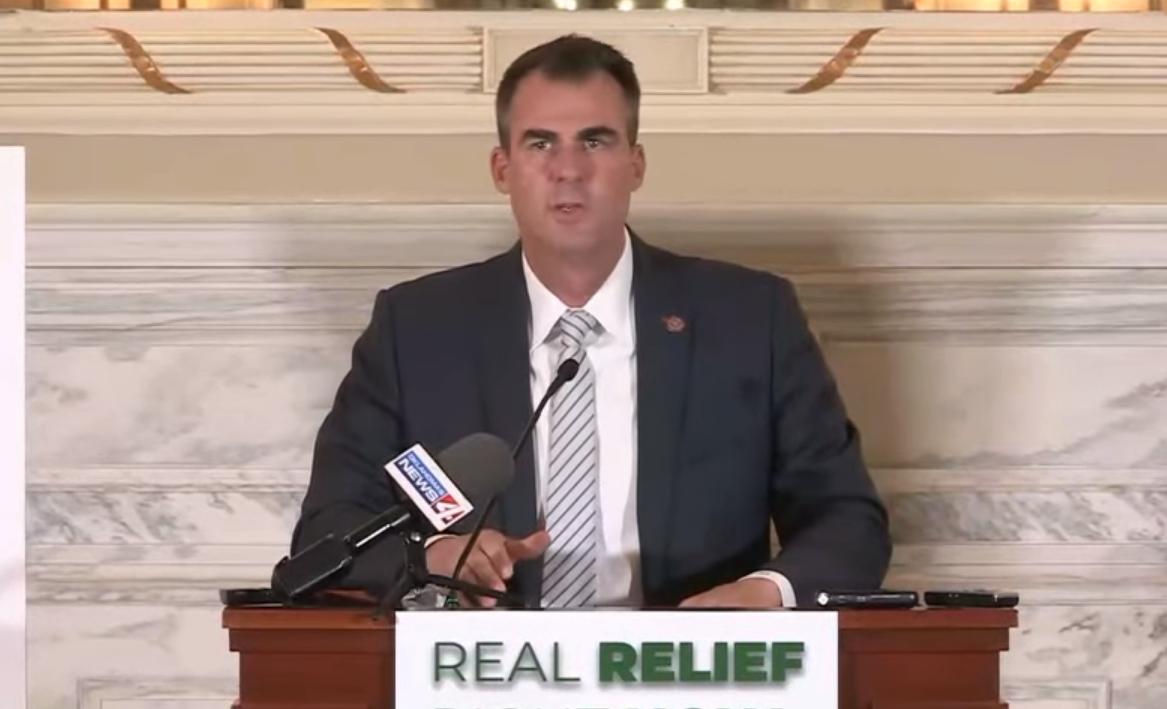
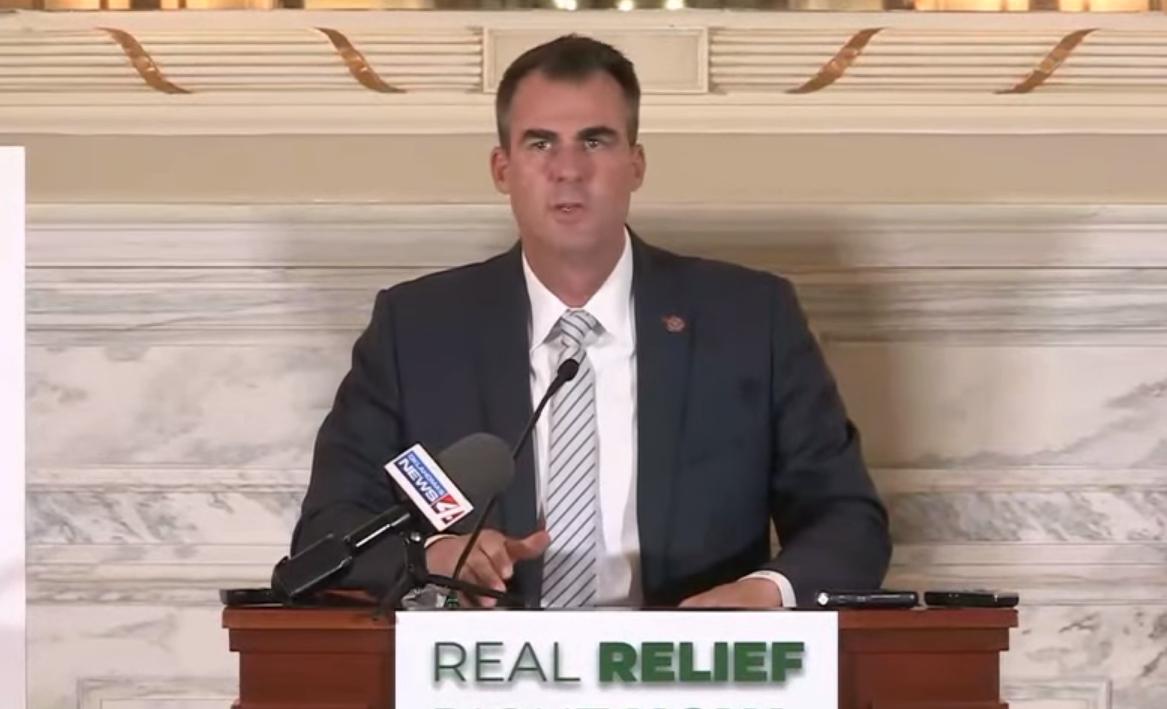
 OKLAHOMA CITY (KOKH) — Governor Kevin Stitt signed Executive Order 2025-01, aiming to keep Oklahoma’s postsecondary institutions and their student-athletes competitive in the changing world of intercollegiate athletics.
OKLAHOMA CITY (KOKH) — Governor Kevin Stitt signed Executive Order 2025-01, aiming to keep Oklahoma’s postsecondary institutions and their student-athletes competitive in the changing world of intercollegiate athletics. Stitt said this proactive measure addresses the inconsistent national rules governing NIL payments, which have led to uncertainty and disparity among states and athletic conferences. Oklahoma institutions, which belong to different conferences with varying regulations, faced potential disadvantages that this order seeks to mitigate.
The order permits the creation of foundations to serve as a clearinghouse for entities to contribute to NIL funds without fear of retaliation or investigation from athletic organizations such as the NCAA or athletic conferences. It also ensures that Oklahoma taxpayer dollars will not be used for these payments.
“Oklahoma is home to some of the nation’s most outstanding student-athletes,” said Governor Stitt. “This executive order ensures that these student-athletes have access to the same opportunities as their peers in other states. It’s about leveling the playing field and maintaining the competitive edge that defines Oklahoma athletics. This action is a critical step to protect Oklahoma’s student-athletes and ensures they have the opportunity to succeed on and off the field.”
Oklahoma Governor Kevin Stitt
The order allows institutions to facilitate direct payments to student-athletes for the use of their name, image, and likeness (NIL) while federal and legal decisions on NIL payments are still pending.
Key provisions of the executive order include:
- Authorization for Oklahoma postsecondary institutions to facilitate NIL payments to student-athletes.
- Protection for institutions and individuals from investigations or adverse actions by athletic organizations for engaging in NIL-related activities.
- Restrictions preventing the use of state-allocated funds for NIL payments.
- Automatic expiration of the order upon final settlement approval in the federal NIL litigation or the enactment of a federal law governing student-athlete payments.
NIL
College Football Playoff Rankings Just Shook the National Championship Odds
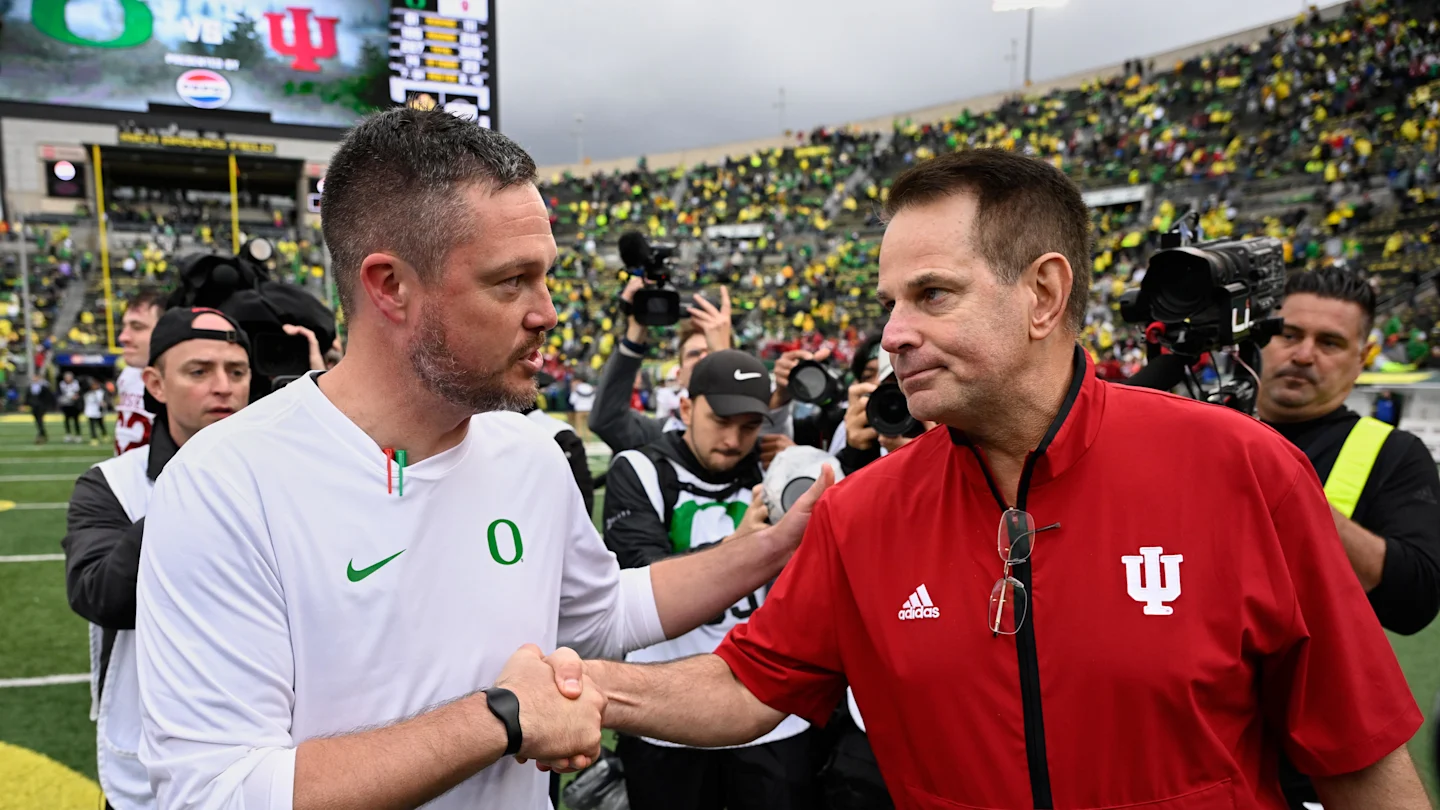
The College Football Playoff bracket is officially set, and this year’s slate could be one of the most thrilling in recent memory as teams fight for a chance to claim the 2025-26 National Championship.
Several programs have a real opportunity to win their first-ever national title, including the top-ranked Indiana Hoosiers, the No. 4 Texas Tech Raiders, and the No. 5 Oregon Ducks.

The Ducks will host a first-round playoff game at Autzen Stadium on Dec. 20 at 4:30 p.m. PT facing James Madison. The winner advances to face No. 4 seed Texas Tech in a quarterfinal game at the Orange Bowl on Jan. 1 at 9 a.m. PT in Miami, FL.
With dates, times, and matchups now locked in, the national title landscape is starting to shift. Oddsmakers have adjusted the odds, and fans are analyzing potential paths to the championship for each team.
National Championship Odds Shift
Despite Indiana beating Ohio State in the 2025 Big Ten Championship Game, oddsmakers still give the Buckeyes the best odds to win the national championship. If Ohio State does win, it will become the second FBS team to win back-to-back national titles in the College Football Playoff era, joining Georgia (2021, 2022.)
Indiana’s odds did get better, after the victory over Ohio State, moving from +450 to +300, while Ohio State’s dropped from +160 to +210.
Another big mover in title odds is the Texas A&M Aggies, who lost to the Texas Longhorns in their regular season finale and dropped from +1000 to now +1400 odds to win the title.
Oregon’s odds improved quite a bit, despite not playing this week from +1100 to +850. This could be in part due to an advantageous seed, opponent and home-field advantage. The Ducks have the fourth best odds to win the title in football.

Below are the updated odds on DraftKings to win the title.
Ohio State +210
Indiana +300
Georgia +600
Oregon +850
Texas Tech +800
Texas A&M +1400
Alabama +2000
Miami +2200
Ole Miss +2500
Oklahoma +6000
Notably, three out of the 10 teams with the best odds to win the national championship are in the Big Ten. Oregon’s opponent, James Madison is tied for the worst odds with Tulane at a massive +60000.
College Football Playoff Bracket

Here are the final rankings.
1. Indiana (Big Ten champion)
2. Ohio State
3. Georgia (SEC champion)
4. Texas Tech (Big 12 champion)
5. Oregon
6. Ole Miss
7. Texas A&M
8. Oklahoma
9. Alabama
10. Miami
11. Tulane (American Athletic champion)
12. James Madison (Sun Belt champion)
The College Football Playoff Selection Show talked about the Ducks.
“When is comes to Oregon, they know who they are. Dante Moore is playing outstanding. Kenyon Sadiq, best tight end in America. The physicality they exude. Another team that understands what their identity,” Booger McFarland said. “They haven’t always played up to their par throughout the season, but they’re starting to kick on all cylinders. And it’s going to be a tough ask for whoever has to go to Eugene and deal with the Ducks at Autzen.”

MORE: Five Things to Know About Oregon’s New Offensive Coordinator Drew Mehringer
MORE: Meet the Most Underrated Signees In Oregon’s Recruiting Class
MORE: Oregon’s Dan Lanning Reveals Recruitment of 5-Star Anthony Jones from Alabama
SIGN UP FOR OUR NEWSLETTER HERE!
Oregon’s high-powered offense and home-field advantage make them a team to watch, but the bracket is stacked with formidable opponents that could derail any contender. The Ducks cannot overlook their first round matchup as the Texas Tech Raiders wait in the quarterfinals round.
Here are the National Championship odds from Dec. 1, for reference.
Ohio State +160
Indiana +450
Georgia +800
Notre Dame +900
Texas A&M +1000
Texas Tech +1000
Oregon +1100
Alabama +1300
- Game odds refresh periodically and are subject to change.
- If you or someone you know has a gambling problem and wants help, call 1-800-GAMBLER.
NIL
Steady Droppin Dimes – NIL on National Signing Day: Is it all about the highest bidder now?

Every week, former Michigan great, NFL 1st round pick, 10-year pro, and current Wayne State head football coach Tyrone Wheatley, former Michigan point guard Daniel Horton, and I come together on Steady Droppin’ Dimes, a sports show featuring real talk, and real views, from three real dudes. College football, college basketball, NFL, and NBA topics drive much of the debate, but discussion of other sports will enter the fray some days as well. Non-sports topics aren’t off limits, and neither are celebrity guests.
On the latest episode of Steady Droppin Dimes, the crew discusses the impact of NIL on National Signing Day. They also tackle the question of which of the new college football hires has the best odds of success, and which will crash and burn. Lastly, they revisit the question of which is the best team in college basketball.
The contents and full episode notes appear below.
Contents and Episode Notes
00:00 – Opening, Holiday Catch-Up & Steady Dropping Dimes Crew
- Sam opens another edition of Steady Dropping Dimes, reintroducing the weekly show and its Golden Limo sponsorship
- He brings in the full crew, starting with Tyrone Wheatley, whom he still calls the best athlete he’s ever seen with his own eyes
- Tyrone shares he played last episode sick and reveals he actually had pneumonia but “toted the mail” anyway
- Sam jokes about producer Lance upgrading the show with color-coded scripts and name tags on screen
- Daniel Horton checks in, saying he barely made it to the show, and chat jokes about “in this NIL era, we steady dropping bags,” foreshadowing later NIL talk
05:22 – Daniel Flips: Michigan Is the Best Team in the Country
- Sam explains fans have been asking what’s up with Daniel, since Daniel wasn’t immediately crowning Michigan as the best team
- Daniel says at first everyone was just being “Michigan homers,” and he prides himself on not being a homer, even as an alum
- He now fully agrees Michigan is the best team in the country and playing the best basketball, especially on the defensive end
- Vegas convinced him: if they defend with that energy, effort, passion, and togetherness, he’ll “stand on the table” for this team
- Daniel stresses that shots won’t always fall or look pretty, but defense, effort, and love for what you’re doing translate in any game, in any sport
10:32 – Aday Mara’s Development, Consistency Questions & Dusty’s Roster Vision
- Sam shifts to the three-big frontcourt, saying Merez has surged lately and he didn’t expect Aday Mara to be this fluid at 7’3″
- He wonders how Mara will handle Big Ten physicality—opponents getting into his body, banging him, and forcing him to prove he can still rebound and score
- Sam notes Yax looks ready to bring it nightly, but he’s unsure whether Mara can sustain high-level play game-to-game after an early stretch where he looked like a lottery pick, then disappeared
- Daniel admits he was skeptical when Mara transferred after a disappointing UCLA stint, but says Mara’s progress this quickly is encouraging for his future
- He explains the hardest jump is from “not very good” to “serviceable/good,” and Mara seems to have cleared that; now it’s about experience and building consistency to become an all-conference-level player in Dusty’s system
13:34 – Transfer Fit, AJ Storr Example & Coach Responsibility
- Sam praises Dusty May’s ability to evaluate cultural fit in the transfer portal, calling it an elite skill in this era
- He contrasts Dusty’s approach with Chris Beard’s situation at Ole Miss, where Beard publicly snapped about effort at AJ Storr—who has now been at four schools in four years
- Sam says Beard was really mad at Storr for being who he has always been, pointing out Storr’s identity and track record were clear when they recruited him
- Tyrone says it’s on the coach and staff to know who they are bringing in and how each piece fits a defined role in the “11:30 p.m. staff room board” vision
- He notes great teams come from players majoring in their roles—big or small—and from coaches building rosters around those roles instead of blaming players later for being themselves
18:28 – Winning in the Margins, Toughness & Three-Big Philosophy
- Tyrone recalls his high school coach saying, “We’re going to win in the margins,” which meant two weeks of practice without a basketball focused on effort plays
- He sees Michigan’s current team doing exactly that: winning in the margins with turnovers forced, defense, pace, hype, rebounding, and extra effort that eventually turn into points
- He jokes that if his shot isn’t falling, he’ll “turn into Moses Malone,” attacking the offensive glass to keep impacting the game
- Sam contrasts John Beilein’s instinct—play Yax at the four—with Dusty’s willingness to lean into a three-big lineup, noting both views have logic but Dusty is the one staying up at midnight designing this vision
- Tyrone says different coaches prioritize different building blocks—some start with a big, some with a scorer—but Dusty’s big-heavy, physical, connected approach is working because the whole group fits the identity
21:18 – Dusty’s Transfer Strategy and Quick Chemistry in the Portal Era
- Sam circles back to Dusty’s eye for portal fits, saying he targets guys who fit Michigan’s culture first, then figures out how they fit on the court second
- Daniel points out that of the transfers, Yax was really the only one who had significant prior success; others like Elliott, Mara, and Namari came in as underused or underachieving pieces
- He credits Dusty for grabbing talented but hungry players who needed a stage and were motivated to prove they’re better than their previous roles showed
- Daniel says that in the old days, you built chemistry over 3–4 years; now, you must build it in one or two, and buy-in is easier when guys see this as a major or last chance
- He believes as long as Dusty keeps recruiting that mix of talent and hunger, Michigan can keep creating quick, genuine chemistry in modern one- and two-year windows
24:17 – Coaching Carousel Talk: Who Got It Right and Who Got It Wrong?
- Sam switches to college football, asking Daniel which recent coaching hires got it most right and most wrong
- Daniel surprisingly picks LSU for both: he sees Lane Kiffin as a home run given LSU’s resources and track record, but says the handling of the change from Brian Kelly was messy
- He also likes Jon Sumrall’s move to Florida (after tracking him at Tulane), noting his strong ties and upside as a head coach
- For “most wrong,” Daniel bluntly says it’s Penn State, because they fired their coach early yet still don’t have a replacement while other programs moved quickly
- Tyrone jokes that Crumble Cookie dropped a big NIL “dime” to help keep a coach put, illustrating how off-field money factors into these decisions too
28:02 – Lane at LSU, Complementary Football & Culture Fits
- Sam pushes back on the assumption that Kiffin will definitely win a national title at LSU, pointing out Lane has never truly “won anything big” at the highest level
- Tyrone counters that Lane’s time under Nick Saban taught him a lot, and he’ll build elite staffs and surround himself with the right people, which is how you win
- Daniel says Lane has rehabilitated his image since the Tennessee/USC days and that his confident, offensive-minded personality matches what LSU fans want more than Brian Kelly’s did
- Sam agrees LSU’s offense will be electric but questions whether Lane can sustain the kind of complementary football and elite defense required to win championships in the SEC
- They note Lane kept DC Blake Baker and has a massive NIL budget, but Tyrone warns the real challenge is using that money on the right players instead of simply stockpiling “convicts” with talent
32:58 – Michigan State, Pat Fitzgerald & Sparty’s Ceiling
- Sam pivots to a surprise take: he thinks Michigan State got it “most right” by hiring Pat Fitzgerald and jokes that MSU owes him money for saying months ago Fitz would rehabilitate them
- He paints a realistic model: at Northwestern, Fitzgerald accepted that they wouldn’t compete every year but would scrap for a few seasons and then build toward senior-heavy, competitive years every third or fourth season
- That cyclical, blue-collar approach fits Michigan State more than chasing the same recruits as Michigan and Ohio State, which Sam says “just isn’t them”
- Daniel laughs that Sam is diabolical, basically sentencing MSU to seven wins a year and one win over Michigan every five years and calling that their ceiling
- Sam leans into the bit, saying he’s giving Spartans a more honest reality than they want: they’re the “bootleg Lion-O,” not the real powerhouse, but Fitzgerald can make them respectable and occasionally dangerous
39:55 – Penn State Expectations, Fit, and the Stress of Big Jobs
- Sam and Tyrone agree LSU and Penn State both show how fanbases overestimate how “sexy” their jobs are compared to the stress and expectations
- Tyrone says some jobs are actually unattractive behind the scenes—LSU’s Bayou grind and Penn State’s national-title expectations without SEC-level resources limit the candidate pool
- He believes James Franklin got stale but also notes seven wins won’t cut it at Penn State, and coaches are now scrutinizing whether the financial and support package matches the stress level
- They argue that firing a coach isn’t a magic reset button—schools often discover the market isn’t beating down their door the way fans imagined
- Tyrone suggests Penn State might be best served hiring the interim (Terry Smith/Kenny W.), someone who already knows the realities, rather than chasing a fantasy candidate
46:17 – Savion Hiter, NIL Ambassadors & Setting Up the Signing Day Conversation
- Sam says they’d be remiss not to talk about National Signing Day and highlights No. 1 running back Savion Hiter signing with Michigan
- Listeners have asked for a weekly Hiter film breakdown from Tyrone, but Sam wants to give Tyrone time to watch tape before putting him on the spot
- He frames today’s focus as NIL’s impact on Signing Day itself, not just recruiting months beforehand
- Sam describes the day as “almost like day trading,” with schools sliding in last minute with extra $200–300K just as kids are ready to sign
- He stresses that for many families, that amount of money is life-altering, and taking time to consider it is not a character flaw—it’s a real-life decision
53:58 – NIL on Signing Day: Day-Trading Offers, Agents & Tough Choices
- Sam says some programs still take a “This is Michigan, this is the offer, take it or leave it” stance that implicitly shames families for considering better financial deals
- He has a major problem with using “character” language against kids—especially those from modest backgrounds—who weigh a significantly higher NIL number
- Sam explains another layer: agents now sit between players and schools, some being fully certified NFL agents already eyeing future pro commissions
- He lays out a hypothetical: a recruit committed to Michigan is offered $300K more by Penn State; the player wants Michigan, asks if Michigan can come up some, but his agent keeps pressuring him to take the higher Penn State offer
- Tyrone says this creates a painful squeeze: schools can be rigid and pompous on one side, agents self-interested on the other, and the kid in the middle just wants to make the right choice for school and family
59:20 – Negotiation, Family Stories & Why Money Doesn’t Equal Bad Character
- Tyrone’s wife once commented, “This is what they chose,” meaning once NIL got opened, the chaos was inevitable; you can’t un-open the box
- He argues players don’t actually need agents for most NIL agreements and wonders why someone should get 3–5% of money they didn’t earn on the field
- Tyrone calls much of the current agent behavior predatory and believes there should be a “true dead period” around signing day with total radio silence from schools
- He emphasizes that for many families, $300K represents “300,000 opportunities”—to pay off a mortgage, fix a car, avoid foreclosure, or get stability, not greed
- Tyrone shares a personal story of his grandmother turning down an illegal under-the-table offer back in the day; if the same money were legal NIL today, he’d absolutely negotiate hard to take care of her without that being a “character issue”
1:07:25 – Can NIL Be Regulated? Agents, Salary Sheets & Player Power
- Sam floats the idea that college football should proactively regulate NIL agents—perhaps through a player association or new legal framework—so families have access to vetted, accredited representatives
- Tyrone likes the idea in theory but asks who would regulate it, since the NCAA and schools both want to avoid added legal liability
- He suggests an alternative: a public “salary sheet” by position, similar to NFL structures, where schools must declare NIL ranges so players can see going rates without middlemen
- That kind of transparency would let a recruit compare three schools on signing day, open negotiations at 2:00 p.m., decide by 3:00, and skip paying an agent to shuttle numbers back and forth
- Both acknowledge agents can provide knowledge, but in the current unregulated environment too many chase quick fees and push kids toward the highest bid rather than the best overall decision for the player
1:14:09 – From Fax Machines to NIL Chaos, Brady Marchese vs. Zion & Closing
- Tyrone reminisces about the old signing-day stress being about NLIs arriving by fax and coaches camping at houses to flip kids, contrasting that with today’s last-minute NIL calls
- Sam says signing day used to be a celebration where coaches put their feet up; now it’s the most stressful day of the year, with staff sweating over possible late flips
- They joke about coaches like Fran Brown publicly threatening retaliation against those who try to flip their commits, hinting at how emotional the new market has become
- Sam closes by comparing WR Brady Marchese and Zion Robinson: Brady is a 6-1 burner and precision route runner who can return kicks and work the slot, while Zion is a longer 6-3 high-jumper type on the outside
- He says Brady’s top-end speed and versatility make him a great complement to Travis Johnson and Jamar Browder, fitting a different profile than Zion and rounding out the receiver room
- Sam wraps the episode thanking Golden Limo, the Dimes crew, and the audience, joking that he’s missing the Lions game for them and promising to be back next week with more film and NIL talk
1:18:22 – End of show
Not a VIP subscriber to The Michigan Insider? Sign up now and get access to everything TMI has to offer on all things Michigan and access to the No. 1 site covering the Wolverines for 60% an annual subscription!
Want the latest news on Michigan delivered right to your email? Subscribe to The Michigan Insider newsletter here. It is free and a great way to get daily updates on Michigan football, basketball, baseball, recruiting, and more delivered straight to your inbox.
Sign up for FREE text alerts on The Michigan Insider to get breaking news on commitments, decommitments, transfers, injuries, coaching changes, and more with our NEW text alert system available to all registered users and VIP subscribers. Click here to become a FREE registered user and Click here if you are already a VIP subscriber then follow these directions to set up your text alerts.
NIL
Robert Griffin III blasts College Football Playoff committee for not punishing Alabama, references BYU

The College Football Playoff bracket was revealed — and it wasn’t without controversy. Among those who took issue with how the rankings were made was Robert Griffin III, who called the CFP selection process, “a complete joke.”
His problem with the bracket lies in where Alabama was ranked. The No. 9-seed, the Crimson Tide lost 28-7 against Georgia in the SEC Championship and dropped to 10-3 on the season as a result. Meanwhile, BYU lost in similar fashion and was the second team out of the field.
“Getting blown out in the Conference Championship matters for a Big 12 team like BYU, but doesn’t matter for an SEC like Alabama who had more losses and a bad loss to a 5-7 team? Unbelievable SEC bias,” he wrote on X.
Griffin III said that the College Football Playoff committee had the opportunity to do the “most right thing” with the “smallest backlash.” Instead, controversy reigned supreme on selection Sunday as Miami was slotted as the No. 10 seed while Notre Dame was omitted from the bracket entirely despite being ranked ahead of the Hurricanes for several weeks.
“Alabama and BYU getting blown out in their conference championship games opened the door to put both Notre Dame and Miami in,” Griffin wrote in another tweet. “Instead they dropped the ball and punished BYU for losing, didn’t punish Alabama for losing and then flipped Notre Dame and Miami despite neither of them playing a game.
“None of it makes sense. They did the thing that would give them the most backlash just to have 5 SEC teams in the playoff. That makes everyone question the integrity of the process and rightfully so.”
Now, Alabama will travel to Oklahoma to play the Sooners in Norman. One of Alabama’s three losses this season came against the Sooners — in Tuscaloosa on Nov. 15. Miami will play the one-loss Texas A&M Aggies on the road in one of the toughest environments in college football.
Notre Dame, meanwhile, will likely be playing in one of the top non-CFP bowl games sometime in the next few weeks. In the end, five teams from the SEC make the playoffs, including the Crimson Tide, Sooners, Aggies, as well as Georgia and Ole Miss.
NIL
BCS Formula adds to the Final College Football Playoff Rankings controversy

The 2025 college football season is over and the College Football Playoffs are officially set to begin. And not without significant controversy after a 10-2 Notre Dame team was left out.
But what might the playoff look like if the committee wasn’t involved and it was left up to a less subjective system, like the BCS? Well, the fine folks at BCSKnowHow.com have clued us in on exactly what that would look like.
On3 stops to compile BCSKnowHow’s top 25, breaking it down into the hypothetical matchups it would create. Let’s dive into it below.
Indiana’s win in the Big Ten Championship Game was enough to cinch the No. 1 seed in both reality and in the BCS simulation. The Hoosiers are clearly the top team in the country and as such have earned a bye in the playoff.
Few teams are firing on all cylinders the way Indiana is right now, and the Hoosiers are pretty battle-tested after knocking off the next two best teams in the league. There’s a whole lot of excitement around the program right now, and rightly so.
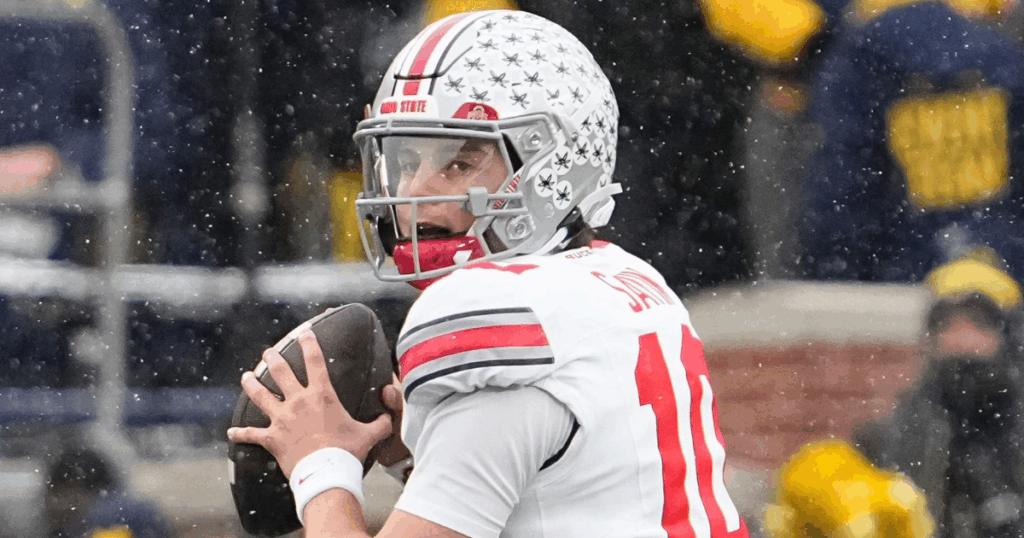
The simulated BCS continues to match up with the actual College Football Playoff rankings, keeping Ohio State up at No. 2 despite the loss on Saturday in the Big Ten title game. It was a close loss that could have cut either way, and it certainly won’t be a deterrent for the Buckeyes.
Now the question becomes how quickly Ohio State can turn the page on that loss? Will it linger or will the Buckeyes march on with a unified front and a clear goal? Something tells us Ryan Day will have his squad ready.
The Georgia defense kept Alabama off-balance all day long in the SEC Championship Game, paving the way for a blowout win. The offense did what it needed to apply pressure, and it eventually caused the Crimson Tide to cave.
Though the Bulldogs end up with the No. 3 seed, they’ll still have a nice path in the playoffs that begins with a first-round bye. That’s important in getting everyone healthy and ready to roll for the College Football Playoff run.
Texas Tech, like in the College Football Playoff rankings, takes the No. 4 spot in the BCS simulation. That keeps the Red Raiders in position to earn a first-round bye and avoid playing right away.
The Red Raiders might be playing as well defensively as any team in the country, even after impressive showings by Ohio State and Indiana on Saturday. Can that power Texas Tech to a deep playoff run?

The first team to check in outside the top four, Oregon earns a first-round home game by virtue of checking in at No. 5. It also gets the lowest-ranked conference champion by virtue of doing so, and this matchup is the same as the actual CFP.
Oregon probably hasn’t quite played its best football just yet, but getting a home game to start a playoff run can potentially kick things into gear. Say this: Nobody’s exactly going to be lining up wanting to face the Ducks.
The second SEC team in the field in both the College Football Playoff rankings and the simulated BCS, Ole Miss earns a first-round home game in the playoffs. Oxford should be downright insane.
Throw in the fact that the Rebels now have a new coach for the playoffs and the intrigue for this one is off the charts. The rankings do, however, include a rematch for Ole Miss. More on that below.
Again, the CFP continues to track perfectly with the BCS simulation through the first seven teams. That’s been the case each of the first two years in the playoff; the committee is often not much different than the BCS.
Kyle Field gets tapped to host a playoff game, and in this edition the opponent actually does change. Alabama checks in as the No. 10 team and thus the opponent for Texas A&M in the first round.

Still the same as the College Football Playoff rankings, and Oklahoma gets to host a home playoff game as a result. The Sooners have certainly earned it after compiling some excellent wins, including a win over Alabama.
The weather is even shaping up such that we could have a potential snow game in Norman in two weeks. That would certainly be something for two powerhouse teams vying for a national title, ultimately.
The first drastic change the BCS simulation produces against the College Football Playoff rankings is the inclusion of Notre Dame in the field at No. 9. Because Alabama slipped behind Notre Dame, there was a buffer with Miami.
That’s ultimately what did the Fighting Irish in when the real field was unveiled on Sunday. Alabama did not slide, leaving Notre Dame vulnerable to the head-to-head result with Miami and out of the field. Not so in the BCS.
Alabama checks in only one spot lower than the actual CFP in the simulated BCS, falling to No. 10 overall. That puts it as the last team to make the field as an at-large.
The Crimson Tide have a lot of work to do to prove they’re worthy of the bid after falling to the Bulldogs in blowout fashion on Saturday evening. Can Alabama regroup and put up a fight on the road at Texas A&M?
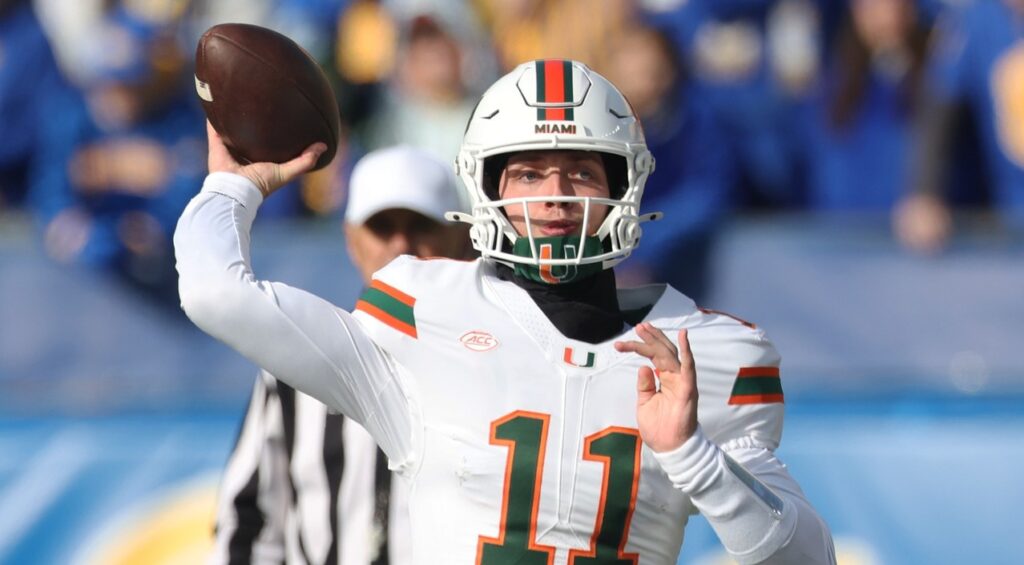
Miami doesn’t get the benefit of sidling up next to Notre Dame in the rankings in the BCS simulation. Thus, the Hurricanes end up left out of the field in this edition of the would-be playoffs.
Ultimately, Miami had a strong season but the loss to Louisville would prove costly in this scenario. Luckily for Hurricanes fans, this is just an exercise. In reality, Miami is readying for a first-round playoff game at Texas A&M.
BYU falls to the same spot in the simulated BCS rankings as the College Football Playoff, which is to say outside of the playoff field. Even with a closer game in the Big 12 Championship Game it’s not clear that BYU would have had enough juice to make the field.
Overall it was a strong season for the Cougars, but they were blown out both times by the Red Raiders. Wins over Utah and Arizona were reasonably impressive, though.
Rest of the CFP Top 25: 13-25
- Vanderbilt Commodores
- Texas Longhorns
- Utah Utes
- USC Trojans
- Michigan Wolverines
- Tulane Green Wave
- James Madison Dukes
- Arizona Wildcats
- Virginia Cavaliers
- Navy Midshipmen
- North Texas Mean Green
- Iowa Hawkeyes
- Georgia Tech Yellow Jackets
First-Round Byes
- Indiana Hoosiers
- Ohio State Buckeyes
- Georgia Bulldogs
- Texas Tech Red Raiders
5. Oregon Ducks vs. 12. James Madison Dukes
Oregon will get to play host to James Madison in this matchup that mirrors the actual College Football Playoff selections. It’s hard to see James Madison coming away with a win in that tough an environment, but that’s why they play the games.
6. Ole Miss Rebels vs. 11. Tulane Green Wave
Another true-to-life matchup, Ole Miss will be set to host Tulane in the first round of the playoffs. The two teams have already met once this year, with the Rebels winning in an absolute blowout in Oxford. Can the Green Wave tighten the margin a bit? Maybe even make it competitive?
7. Texas A&M Aggies vs. 10. Alabama Crimson Tide
In previous years this would have consistuted a rematch, but Alabama and Texas A&M did not face each other this year or last year. Still, it’s a game in which both programs — if not the coaches — will be plenty familiar with each other. That could make for a fun game.
8. Oklahoma Sooners vs. 9. Notre Dame Fighting Irish
In the final first-round playoff game, Oklahoma plays host to Notre Dame, which makes the field over Miami in the simulated version of the BCS. This has all the makings of a classic, particularly depending on how the weather shakes out.
NIL
UGA suing former Bulldog, Missouri DE for transfer damages
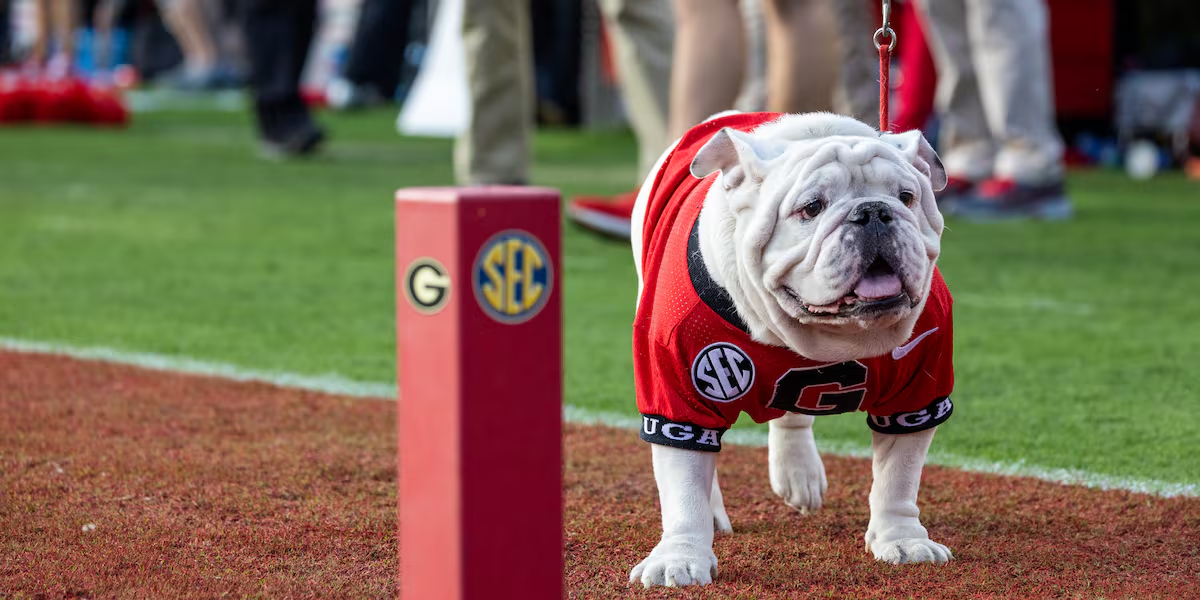
ATLANTA, Ga. (Atlanta News First) — A University of Missouri defensive end is now at the center of what could become a landmark legal battle in college football.
The University of Georgia has filed a lawsuit against former Bulldog Damon Wilson, seeking nearly $400,000 in damages after the player transferred schools.
Wilson, who spent his first two seasons at Georgia, signed a new NIL agreement with the school in December of last year. However, shortly after finalizing the deal, he entered the transfer portal and committed to Missouri about a month later.
According to court documents, Georgia paid Wilson $30,000 of what was structured as a $500,000 NIL contract before his departure. The university argues that because Wilson left before fulfilling the terms of the agreement, he now owes the school a $390,000 lump-sum repayment.
The case highlights the growing tension and legal complexity surrounding NIL contracts and player mobility, and could set a precedent for how schools and athletes navigate similar agreements in the future.
This is a developing story. Check back with Atlanta News First for updates.
Copyright 2025 WANF. All rights reserved.
NIL
IU football is No. 1 seed in College Football Playoff, headed to the Rose Bowl – The Daily Hoosier

Indiana football is three wins from a national title, and they’ve earned the most favorable path to get there.
After a perfect 13-0 season and Big Ten title, IU is the No. 1 overall seed in the 2025 College Football Playoff. The Hoosiers are also the No. 1 team for the first time ever in the new AP Poll released Sunday afternoon.
The CFP bracket was revealed live on ESPN Sunday afternoon and can be seen below.
In the Rose Bowl, Indiana will face the winner of No. 8 Oklahoma and No. 9 Alabama. The Rose Bowl kicks off at 4 p.m. ET on Jan. 1 (ESPN).
If the Hoosiers advance to the national semifinals, that game will be the Peach Bowl in Atlanta on Jan. 9. Texas Tech, Oregon and James Madison are the possible opponents in that game.
Three teams from the Big Ten were in the national top-5, as Ohio State (No. 2) and Oregon (No. 5) were also included in the CFP.
FINAL CFP BRACKET
FINAL CFP RANKINGS
| RANK | TEAM | OVERALL RECORD |
|---|---|---|
| 1 | Indiana | 13-0 |
| 2 | Ohio State | 12-1 |
| 3 | Georgia | 12-1 |
| 4 | Texas Tech | 12-1 |
| 5 | Oregon | 11-1 |
| 6 | Ole Miss | 11-1 |
| 7 | Texas A&M | 11-1 |
| 8 | Oklahoma | 10-2 |
| 9 | Alabama | 10-3 |
| 10 | Miami | 10-2 |
| 11 | Notre Dame | 10-2 |
| 12 | BYU | 11-2 |
| 13 | Texas | 9-3 |
| 14 | Vanderbilt | 10-2 |
| 15 | Utah | 10-2 |
| 16 | Southern California | 9-3 |
| 17 | Arizona | 9-3 |
| 18 | Michigan | 9-3 |
| 19 | Virginia | 10-3 |
| 20 | Tulane | 11-2 |
| 21 | Houston | 9-3 |
| 22 | Georgia Tech | 9-3 |
| 23 | Iowa | 8-4 |
| 24 | James Madison | 12-1 |
| 25 | North Texas | 11-2 |
For complete coverage of IU football, GO HERE.
The Daily Hoosier –“Where Indiana fans assemble when they’re not at Assembly”
Related
-

 Rec Sports2 weeks ago
Rec Sports2 weeks agoFirst Tee Winter Registration is open
-

 Rec Sports2 weeks ago
Rec Sports2 weeks agoFargo girl, 13, dies after collapsing during school basketball game – Grand Forks Herald
-

 Motorsports2 weeks ago
Motorsports2 weeks agoCPG Brands Like Allegra Are Betting on F1 for the First Time
-
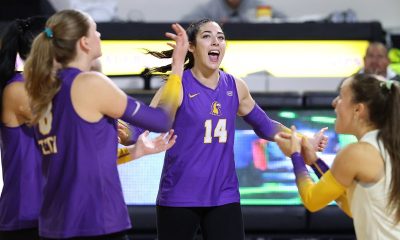
 Sports3 weeks ago
Sports3 weeks agoVolleyball Recaps – November 18
-

 Motorsports2 weeks ago
Motorsports2 weeks agoF1 Las Vegas: Verstappen win, Norris and Piastri DQ tighten 2025 title fight
-

 Sports2 weeks ago
Sports2 weeks agoTwo Pro Volleyball Leagues Serve Up Plans for Minnesota Teams
-

 Sports2 weeks ago
Sports2 weeks agoUtah State Announces 2025-26 Indoor Track & Field Schedule
-

 Sports2 weeks ago
Sports2 weeks agoSycamores unveil 2026 track and field schedule
-

 Motorsports2 weeks ago
Motorsports2 weeks agoRedemption Means First Pro Stock World Championship for Dallas Glenn
-

 NIL1 week ago
NIL1 week agoBowl Projections: ESPN predicts 12-team College Football Playoff bracket, full bowl slate after Week 14
















